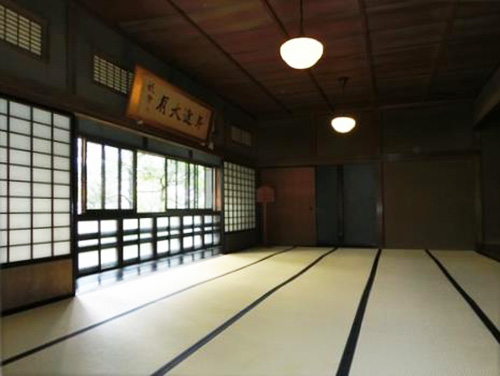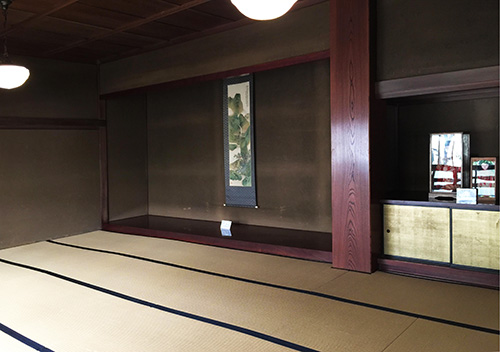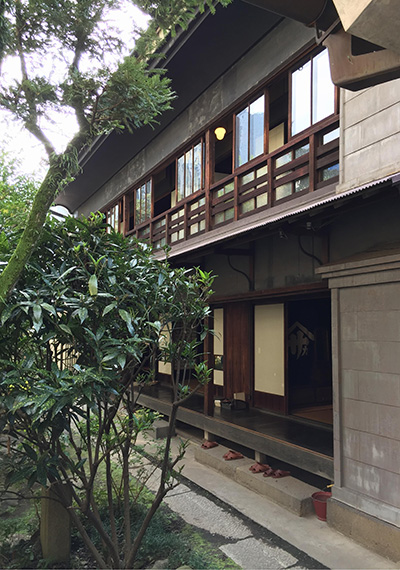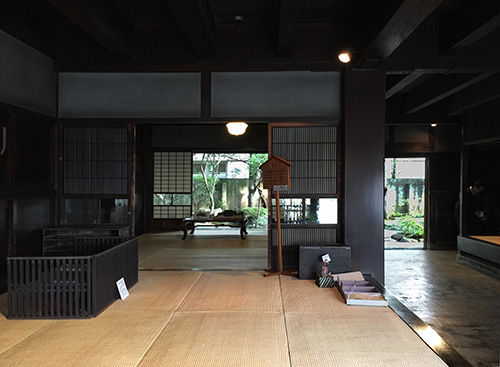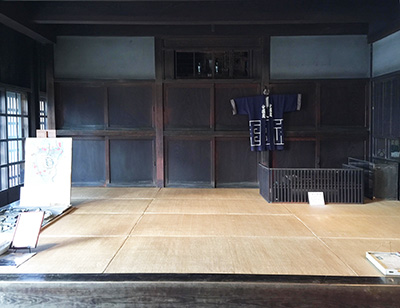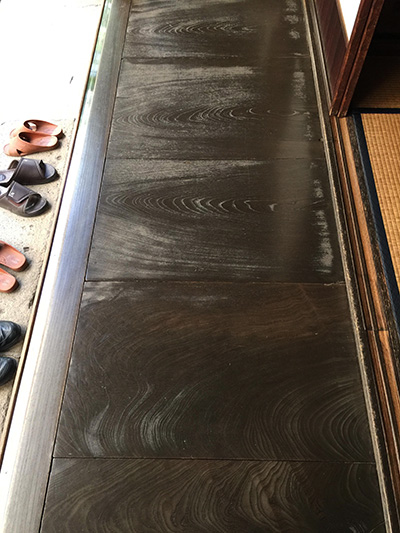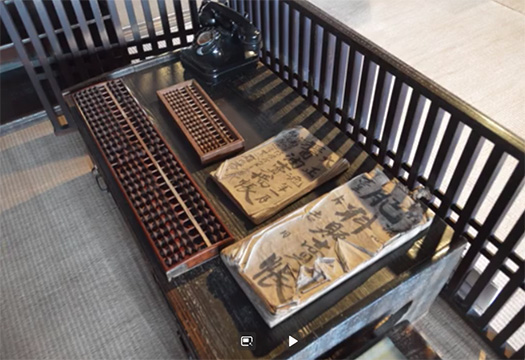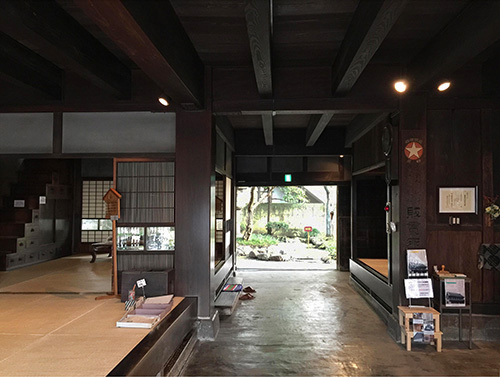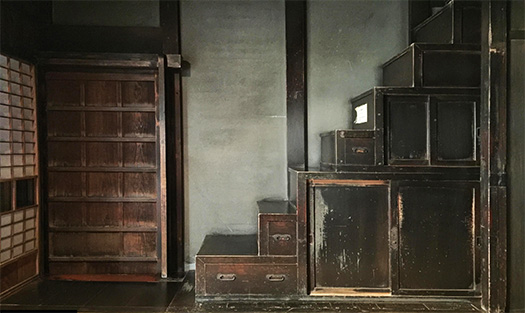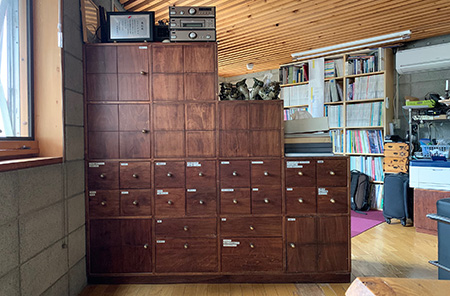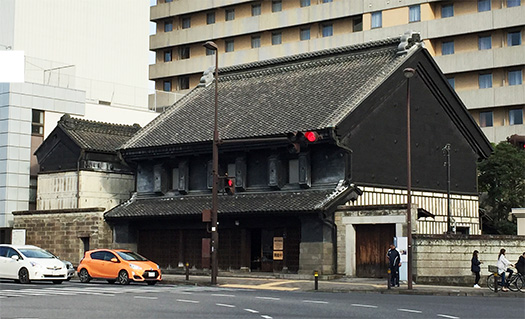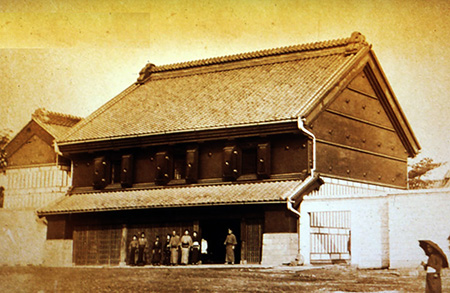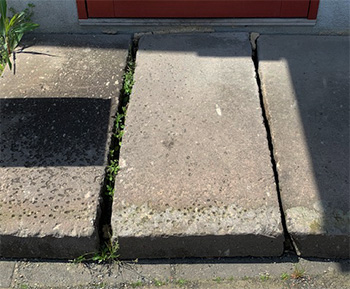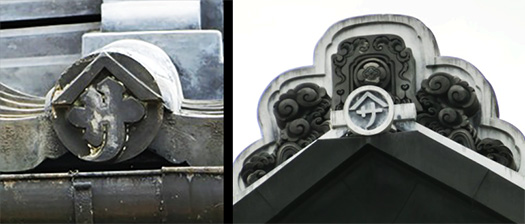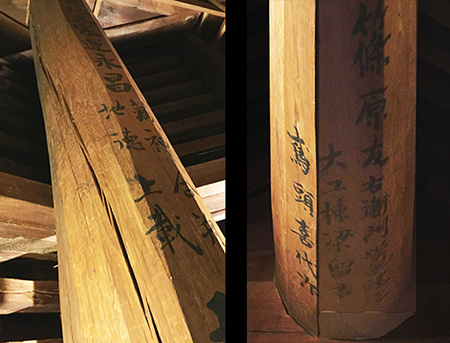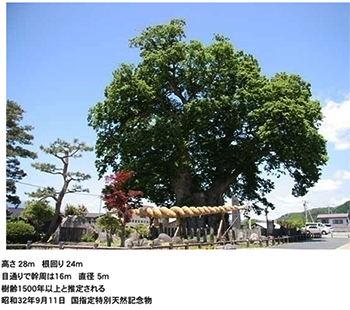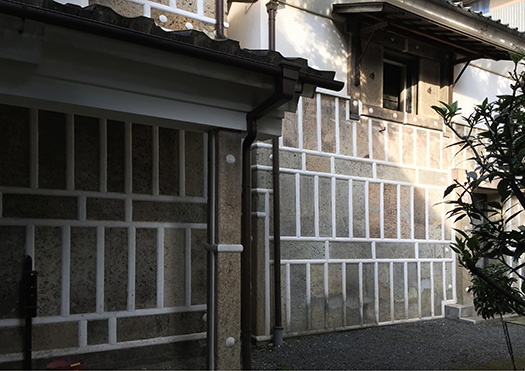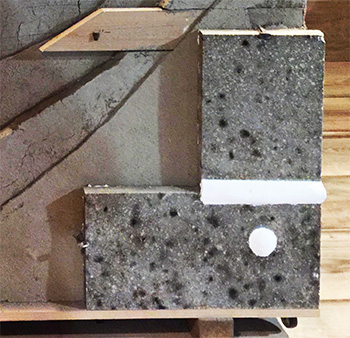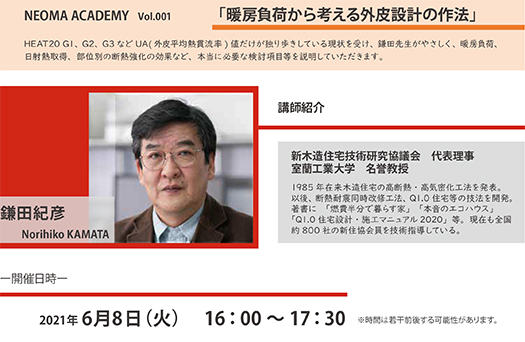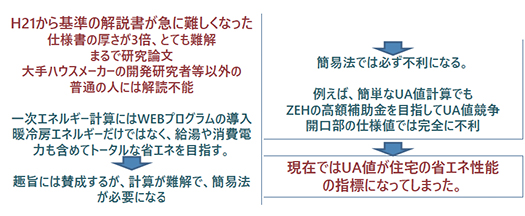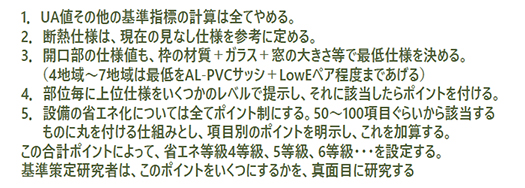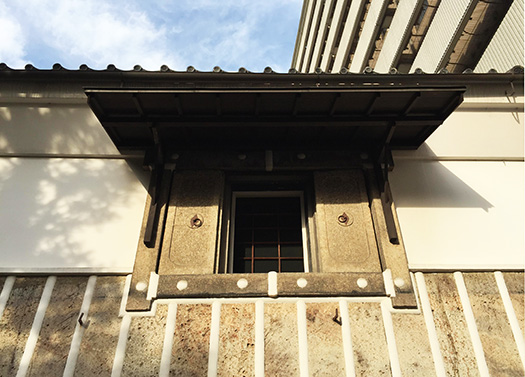
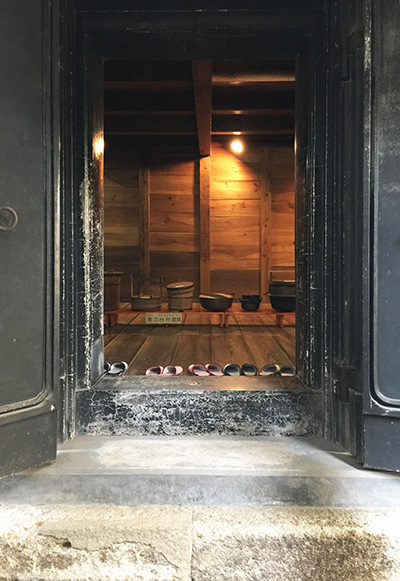
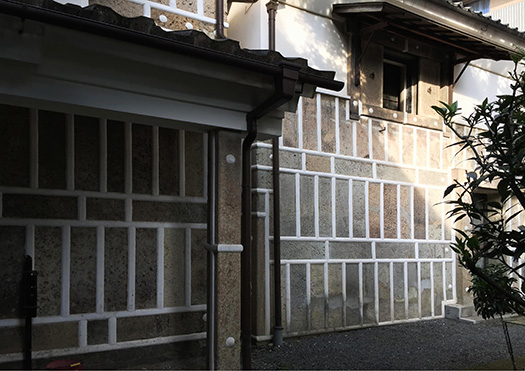
米軍の宇都宮空襲の火災で市域の6割が焼失したとされています。
そのときに市中心部のこの建物は堅牢な「防火性能」で生き残り、
空襲翌日以降、日本軍が戦災罹災した市民のために炊き出しを行ったとき
その会場として宇都宮市民のいのちを繋ぐ建物だったという。
戦争での空襲というような事態はもちろん避けたいけれど、
相手もあることだから、自衛的な体制は考えておく必要がある。
防火建築というのは、まさにそういう基本的な生活安全保障だということが、
この事実によってあきらかなのだと思います。
まさかに備えるのが安全保障なのだと気付かされる。
その防火の役割を果たしたのが大谷石の重厚な外壁構造。
張り方はタテとヨコに変化を付けて、豊かな表情を感じさせてくれる。
独特のリズム感が伝わってきて、なにか訴求してくるものがある。
一枚一枚の大谷石の微妙な色合い、風合いの違いも惹き付けられる。
それらが白い漆喰の充填接着で緊結されている。
1階相当部分がこの大谷石で仕上げられ、その上は漆喰壁仕上げ。
宇都宮空襲前までも、この独特の外観は市民の印象に刷り込まれていただろう。
いのちを繋ぐ配給食の会場・場所として目印になったことでしょう。
戦災で住む家を失った多くの人に、この外壁はうるおいを与えた。
大谷石はまさに地域を象徴する地場産材であり
それが多くの人の危機を救い、支えてくれたことに思いを感じる。
一方下の写真はわが家の30年前の新築時点のもの。

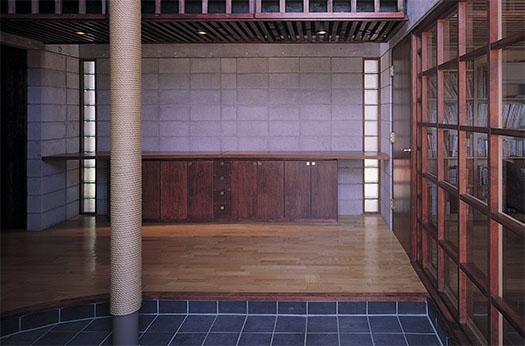
この宇都宮の篠原さん家に惹かれるのはどうもわが家との近似性。
大谷石の外装の張り方ははるか後の世のブロックの積み方と通じるものがある。
北海道の火山灰成形のブロックに対して大谷石は自然積層。
北海道の「石山軟石」も自然に火山灰が積層して石化したもの。
その火山噴火物質の違いがあるのでしょうが、たぶん生成成分は同様。
形成されるプロセスはごく似通っているし、
またブロックの原料は自然に堆積した噴火堆積物なのですね。
はるかな後世のブロックは目地も薄くモルタルが使われているけれど、
この大谷石外壁では白い素肌の漆喰が使われている。
わが家ではブロックは構造材として使われ、さらに外側には
断熱材を外断熱サンドイッチしたあとに煉瓦を積み上げています。
石材は加工が面倒なので木造のように簡便性はないけれど、
しかしもっと長い時間を耐える耐久性要素は高い。
重厚な蔵の扉でいかにも安全を強く感じさせてくれる。
この篠原さん家では劣化しやすい開口部を保護するのに
庇が差し掛けられている。わが家では煉瓦外壁と窓回りの「みず道」を
ずいぶん考えたつもりけれど、やはりより長期安全性では
庇に敵う装置はないでしょうね、完敗だと思っています。
English version⬇
[Oya stone fire protection outer wall / Japanese good house ㉝ -8]
It is said that 60% of the city area was destroyed by the fire of the Utsunomiya air raid by the US military.
At that time, this building in the city center survived with robust “fire protection”,
The day after the air raid, when the Japanese army prepared meals for the victims of the war
It is said that it was a building that connects the lives of Utsunomiya citizens as the venue.
I want to avoid a situation like an air raid in a war, but
Since there are also partners, it is necessary to consider a self-defense system.
Fireproofing is just such a basic life security.
I think this fact makes it clear.
It is realized that it is security to prepare for it.
The heavy outer wall structure of Oya stone played the role of fire prevention.
The tensioning method changes the vertical and horizontal directions to give a feeling of texture.
There is something that appeals to you with a unique sense of rhythm.
The subtle shades and textures of each Oya stone are also attractive.
They are tied together with white plaster filling.
The part equivalent to the first floor is finished with this Oya stone, and the plaster wall finish is on top.
Even before the Utsunomiya air raid, this unique appearance would have been imprinted on the impression of the citizens.
It must have become a landmark as a venue and place for school lunches that connect life.
This outer wall moisturized many who lost their homes in the war.
Oya stone is a locally produced material that truly symbolizes the region.
I feel that it has saved and supported the crisis of many people.
On the other hand, the photo below is from the time of new construction of my house 30 years ago.
What attracts me to this Utsunomiya Shinohara-san’s house is its closeness to my home.
The method of laying the exterior of Oya stone is similar to the method of stacking blocks in the future.
Oya stone is naturally laminated to the block of volcanic ash molding in Hokkaido.
“Ishiyama soft stone” in Hokkaido is also petrified by naturally stacking volcanic ash.
There may be differences in the volcanic eruption material, but the production components are probably the same.
The processes formed are very similar and
Also, the raw material for blocks is naturally deposited eruption deposits, isn’t it?
The blocks of the far posterity have thin joints and mortar is used,
White bare-skinned plaster is used on the outer wall of this Oya stone.
In my house, blocks are used as structural materials, and on the outside
Brick is piled up after sandwiching the heat insulating material.
Stone is not as convenient as wooden because it is troublesome to process,
However, the durability factor that can withstand a longer time is high.
The solid door of the warehouse makes you feel very safe.
In this Shinohara-san’s house, to protect the openings that are prone to deterioration
The eaves are hung. In my house, the brick outer wall and the “water supply” around the window
I thought I’d thought about it a lot, but it’s still more long-term safety
I don’t think there is a device that can match the eaves, I think it’s a complete defeat.
Posted on 6月 9th, 2021 by 三木 奎吾
Filed under: 住宅マーケティング, 日本社会・文化研究 | No Comments »



